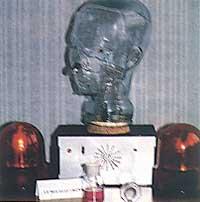Electronic nose electronic nose

For the computer to “see” and “listen” they have already begun to break the path. It seems that the smell time has arrived and that there are first electronic systems to “listen” to the smell. The technology in this field has only begun to develop, so the results are not for the moment strange, but it can be said that we begin to introduce ourselves in the world of smell.
At present the only way to detect odors are the “noses” of people specially formed in it, or the gaseous chromatography. The aromatization of the olorous substance in an injector and its successive passage through a chromatographic column separate the components according to their chemical composition. Then, by extracting each component of the column, it is ionized by a flame, generating in an electrode an electrical signal proportional to the number of ions generated.
A chromatography requires at least one hour of work, being fixed in most laboratory appliances. Therefore, when speed and mobility are needed, chromatography is not effective.

The most remarkable novelty in this field are the smell sensors. The first works have been carried out in Japan with the aim of solving some problems of contamination. The technique used is to modify the electrical conductivity of a semiconductor sensor by aspiring an ambient gas. In this way, the carbon oxide (IV) concentration emitted by vehicles or industrial emissions of chlorine gases, sulfur, etc. It is detected abruptly and the absorption is reversible, since when the sensor is 330ºC, the semiconductor absorbs the molecules for a short time. In Toulouse, research has begun to apply the same type of Japanese sensor to the food industry.
The biggest problem of these sensors, however, is that the components are inseparable, since the variation of the conductivity of the semiconductor seems not to depend on the type of substance that is absorbed, but on its quantity. In Sweden, at the Linkoping Institute of Technology, this resolution problem has been addressed, and it seems that through sensors of different semiconductor metals different families of molecules can be detected, and that the information provided by the semiconductors will form an identity document of each smell.
Linkoping researchers say that a matrix of sixty sensors can detect complex odors. In addition, the footprint left by the aspirated molecules can be seen: when the surface of the semiconductors is swept with a given frequency light, the variation of the electrical voltage produces a change in the frequency of light rays that can appear in the form of color images.
All this is in the experimentation phase, they are only the first steps and there is still a lot of work to make all the information that contributes a smell can be processed automatically.





